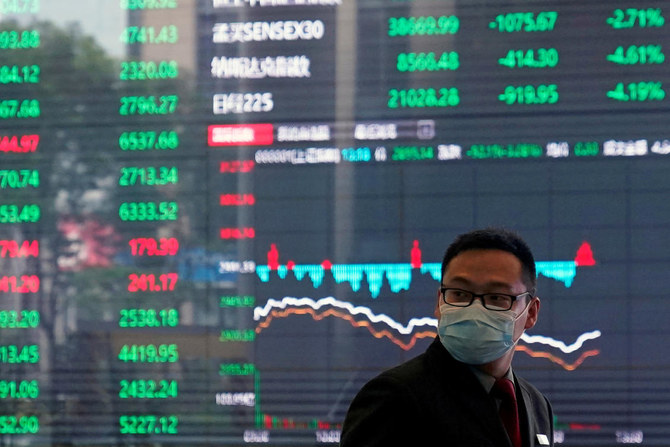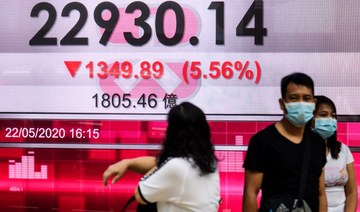What happened:
On Tuesday, global COVID-19 cases passed 8 million, while economies across the world continued their reopening process. Fears of a second wave have been mounting with the virus spreading again fast in Beijing and Texas, Florida and California and elsewhere.
US first-time jobless claims for the week ending June 10 came in at 1.5 million, a figure only 58,000 lower than preceding weeks and higher than expected. This marks the 13th week running of job losses.
Federal Reserve Chairman Jerome Powell gave a two-day testimony in Congress. He warned against withdrawing fiscal stimulus too quickly. He expects a full economic recovery to be unlikely before there are solutions to the health crisis. He also warned that it would take time before the labor market went back to pre-pandemic levels. He had his Mario Draghi (president of the European Central Bank who promised to do everything in his power to preserve the euro) “whatever it takes” moment, saying that the Fed was “committed to using our full range of tools to support the economy in this challenging time.” He reiterated his skepticism about negative rates and said that the Fed was in the early stages of evaluating yield curve control. He deplored racial and other inequalities.
After the losses toward the end of last week, markets traded moderately up for this week.

US retail sales increased by 17.7 percent month-on-month after having declined by 14.7 percent in April. This marks the highest jump since 1992.
UK government debt reached 100 percent of GDP for the first time since 1963, while retail sales in May rose by 12 percent after having fallen by 14 percent in April.
Oil performed better this week than last: Brent continued to trade well above $40/b and WTI pierced the 40-dollar mark. The Joint Ministerial Monitoring Committee (JMMC) of OPEC+ (a grouping between OPEC and their 10 allies led by Russia) met on June 18 and found compliance of 87 percent, which is higher than anticipated. Iraq and Kazakhstan have come up with a compensation schedule for their compliance shortfall of May/June during the third quarter.
The IEA forecast oil demand to fall by 7.6 percent in 2020 and only grow 5.7 percent in 2021. The agency predicted that demand would not reach 2019 levels until well into 2022. While that may sound bearish, the IEA has increased the forecast by 800,000 bpd compared to its May predictions.

Background:
China has announced it would increase purchases of US soybeans, corn and ethanol to keep phase 1 of the trade deal between the two countries on track.
This followed a tweet by US President Donald Trump in which he flagged complete decoupling from China as an option. While the president is known for letting off steam via Twitter, the rhetoric between the world’s largest and second largest economies is getting increasingly acrimonious — especially on the trade front. This is set to continue during the presidential election as both candidates assume a hawkish stance toward Beijing.
The EU, the world’s largest trading bloc, also wants to level its playing field with China. The commission envisages preventing state-subsidised companies from bidding for public contracts as well as limiting their options when taking over strategic European companies. However, the measures do not mention China explicitly.
Globalization and trade have been the drivers behind lifting hundreds of millions of people out of poverty, and with it bringing significant global economic growth. However, the current political climate coupled with the pandemic may lead to a realignment and partial localization of supply chains, which has implications for business practices as well as demand for raw materials, particularly oil.
Ray Dalio, Bridgewater founder and co-chief investment officer, warned about a lost decade for US equities if returns fall victim to deglobalization and margin compression — eroding the profit potential beyond a pandemic-induced cyclical downturn.
Where we go from here:
On Friday, the EU is holding a virtual summit to discuss the proposed €750 billion pandemic rescue package. It envisages the commission borrowing funds and appropriating them via its budget, distributing €500 billion as grants and €250 billion as loans. The proposal is supported by France and Germany and opposed by the so-called “frugal 4” — Denmark, Sweden, the Netherlands and Austria. They consider this package a defacto mutualization of debt. Some of the most heavily indebted Mediterranean countries, which were hardest hit by the pandemic, do not think that it goes far enough. Markets have priced the package into their outlook. However, while it has a good chance of passing eventually, reaching consensus will neither be easy nor fast.
June 19 is quadruple witching day when US futures and options expire simultaneously for single-stock options, single-stock futures, and stock-index options and stock-futures. This means a forced turnover of $48 billion, leading to heightened volatility.
On June 24, the IMF will release its revised economic forecasts for 2020 and beyond. They are expected to be far more pessimistic than the minus 3 percent the fund predicted for 2020 in April.
— Cornelia Meyer is a Ph.D.-level economist with 30 years of experience in investment banking and industry. She is chairperson and CEO of business consultancy Meyer Resources.
Twitter: @MeyerResources


















